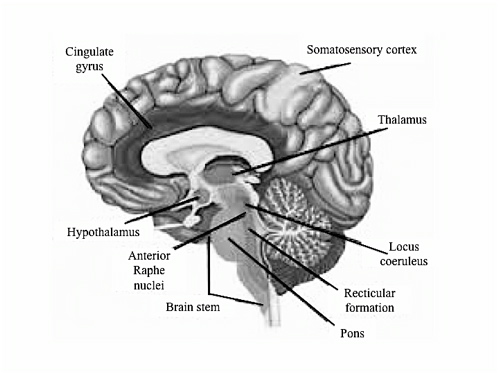A system in the brain stem that controls arousal of other parts of the brain and is closely tied to sustained attention and associated functions. It is that part of the reticular activating system (RAS) emanating from the mesencephalic nucleus in the mesenecephalon sitting atop of the brain stem (the main structure of the system being the reticular formation; see figure below). The RAS (or extrathalamic control modulatory system) is a diffuse network of neurons and fibers that traverse through the brain stem and from here make connections with several cortical and other structures. It consists of two parts: the ascending and descending RAS, the former with connections to the cortex, the thalamus and hypothalamus, and the latter to the cerebellum. While the system is home to a number of neurotransmitters, it is further categorized into cholinergic and adrenergic components. Cholinergic projections descend throughout the reticular formation and ascend to cerebellum, thalamus, and substantia nigra (in the basal ganglia). Adrenergic projections that release noradrenaline (norephinephrine) or less commonly adrenaline (epinephrine) at their terminals connect with noradrenergic neurons in the locus coeruleus, while ascending to the cerebral cortex and descending to the spinal cord. Given its widespread connections and associated neurotransmitters, the RAS is involved in a range of functions including control of the sleep-wake cycle (and thereby attention, behavioral state and consciousness), elimination and sexual activity. During development, its functioning can be adversely affected by smoking during pregnancy and preterm birth.
